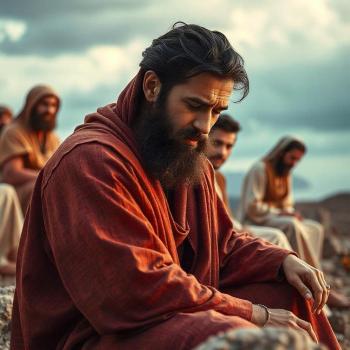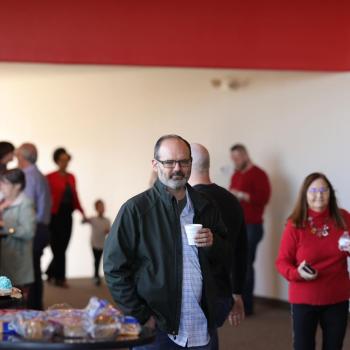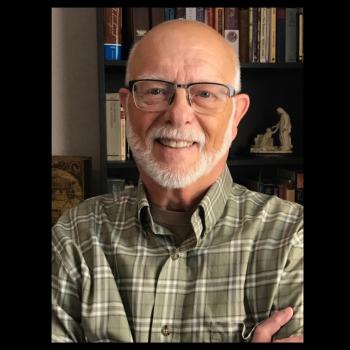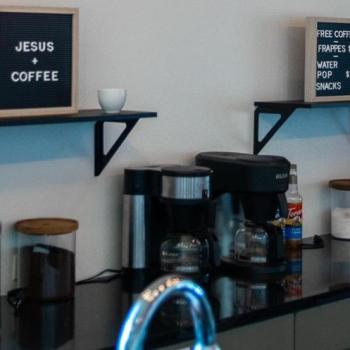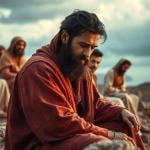Early Influences
There are up to seven actions of the Eucharist in Scripture.
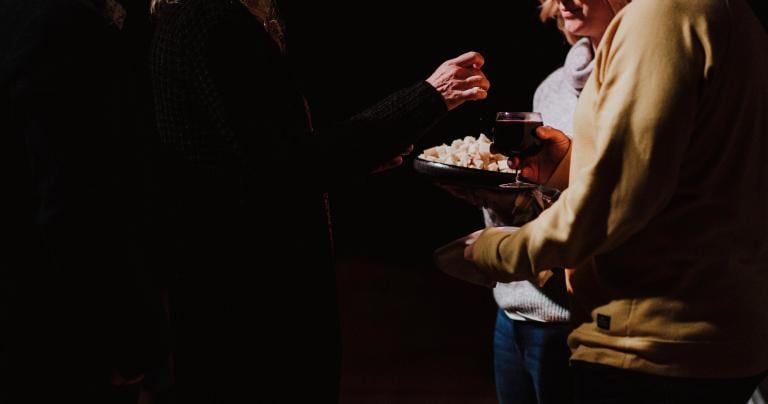
However Dom Gregory Dix contends that a four-action shape emerges across the church. He believes it is from the primitive church.
“(1) The offertory; bread and wine are ‘taken’ and placed on the table together. (2) The prayer; the president gives thanks to God over bread and wine together. (3) The fraction; the bread is broken. (4) The communion; the bread and wine are distributed together.”[1]
Dix points out another distinction of the primitive Eucharist, that there is universal involvement from every believer. Clergy perform this sacrament. Laypersons are not spectators.
“The whole church prayed in the Person of Christ; the whole church was charged with the office of ‘proclaiming’ the revelation of Christ; the whole church offered the eucharist as the ‘re-calling’ before God and man of the offering of Christ.”[2]
Chaburah and Berakah
Dix proposes that according to the Gospel of John, the Last Supper may have been another religious meal the night before the Passover. In Israel’s synagogues there are often gatherings known as chaburoth (plural) or small groups. Jesus and the Disciples may function like a chaburah (singular group). The Last Supper may be a formal chaburah dinner.[3]
Dix lays out the order and rites of a formal chaburah meal. What is important here is that the meal begins when the leader takes bread, breaks it, pronounces a blessing, and distributes it. The leader offers thanksgiving over the various types of food and drink and serves them. At the end:
“came the grace after meals – ‘the Blessing’ or ‘Benediction’ . . . ‘the Thanksgiving’ . . . berakah = ‘blessing’ . . . a little solemnity was added by its being recited over a special cup of wine . . . ‘the cup of blessing’ . . . At the end of ‘the Thanksgiving’ this was sipped by whoever had recited the prayer and then handed round to each of those present to sip.”[4]
Scriptural accounts of the first communion fit into the outline of a formal chaburah dinner
Jesus breaks bread at the beginning, blesses it, and adds His own new meaning. He later blesses “the cup of blessing” and adds His new meaning. Our Lord now institutes the New Covenant.
In order to understand the prayers of the Eucharist, it may be necessary to begin with the Jewish meal that precedes it. The blessings offered in the chaburah are first and foremost thanksgivings. Dix shares the blessing over the bread at the beginning. “Blessed be Thou, O Lord our God, eternal King, Who bringest forth bread from the earth.”[5]
It is important to know this is a thanksgiving meal when interpreting early Eucharistic prayers.
“Among other constituents of the chaburah ritual was the berakah or ‘thanksgiving’, preceded by a dialogues. Among the constituents of the eucharist was the eucharistia or ‘thanksgiving’, fulfilling the same function in the christian as in the jewish rite, and preceded by the same dialogue.”[6]
This is the same across all church traditions in their earliest forms.
For more on Communion in the Early Church from the Archives CLICK
notes 1-6:
Dom Gregory Dix, The Shape of the Liturgy, 3rd ed. (London: Bloomsbury T&T Clark, 2015), 48, 29, 50, 52, 52, 232.





